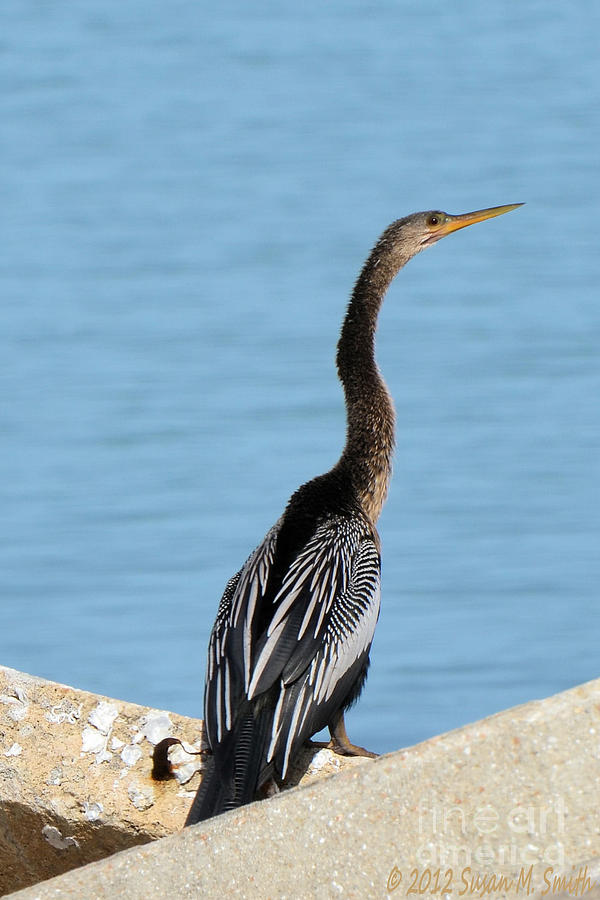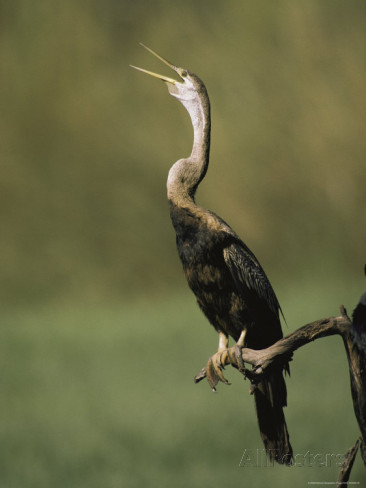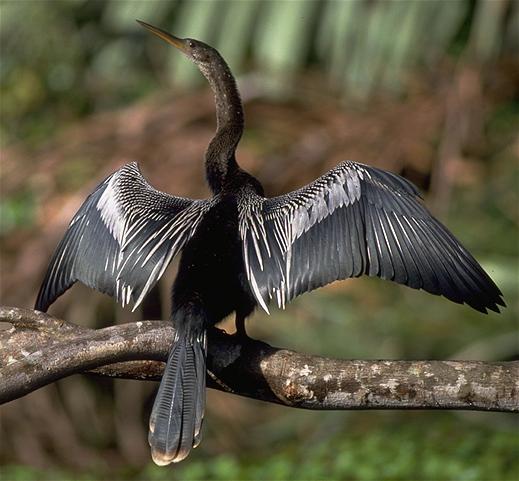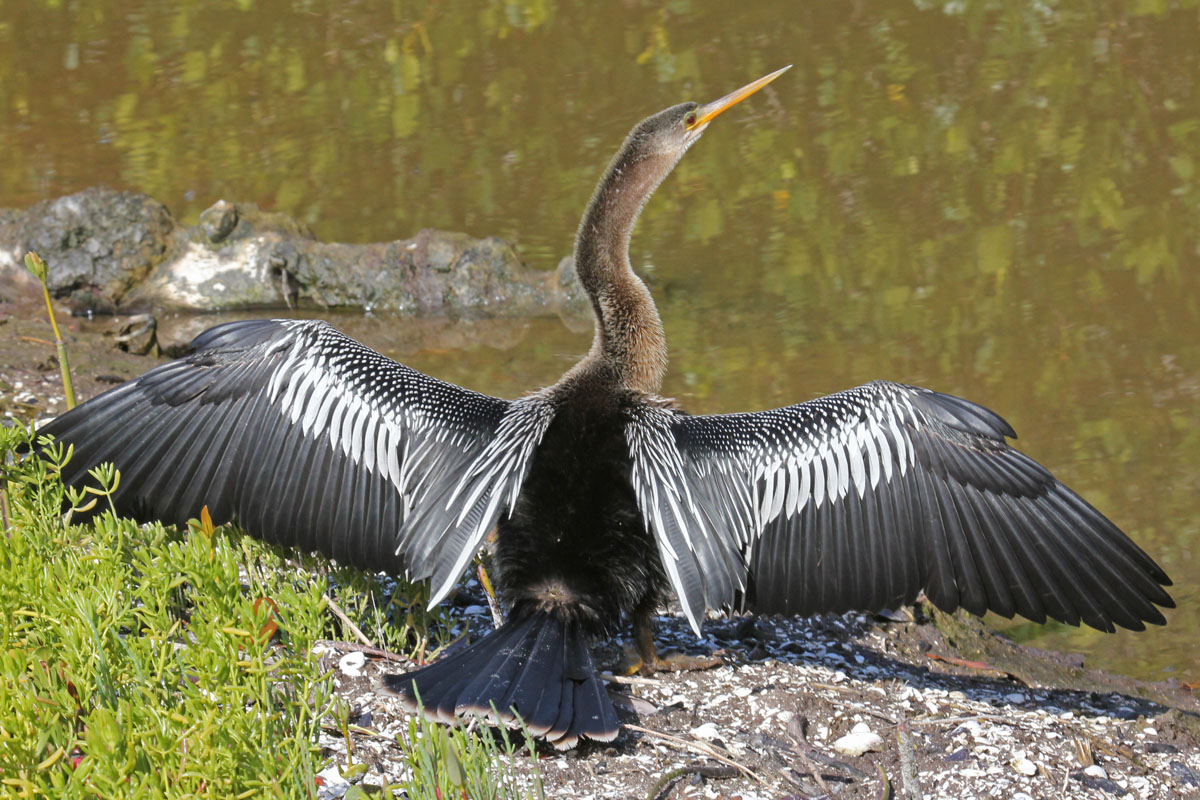
Anhinga anhinga
TAXONOMY
Plotus anhinga Linnaeus, 1766, Rio Tapajуs, Parб, Brazil. Two
subspecies.
OTHER COMMON NAMES
English: Anhinga, American darter, snakebird; French: Anhinga
d’Amйrique; German: Amerikanischer Schlangenhalsvogel;
Spanish: Anhinga Americana.
PHYSICAL CHARACTERISTICS
Body length 34 in (85 cm), with a small head, relatively short
wings, web-shaped tail, yellowish pointed beak, and yellowish
legs and feet; male is colored overall black with silvery-white
markings on the upper wings, while female has a brown head,
neck, and upper chest.
DISTRIBUTION
Southeastern United States, Central America, South America
south to northern Argentina.
HABITAT
Warm-temperate, subtropical, and tropical wetlands, rivers,
lakes, swamps, and estuaries.
BEHAVIOR
Flies in a flap-and-glide manner, and often soars; often swims
largely submerged, with only the head and neck exposed (this
is how it got its common name, “snakebird”); roosts in trees,
and dries its wet plumage by spreading its wings to the sun.
FEEDING ECOLOGY AND DIET
Catches and spears its prey of fish, crayfish, and amphibians by
agile underwater pursuit. Tosses speared prey into the air with
a flick of the head, then catches the prey in mid-air to swallow
head-first.
REPRODUCTIVE BIOLOGY
Tends to breed in colonies; lays one to five eggs in a bulky
stick-nest in a tree near water. Both sexes incubate the eggs
(25–28 days) and care for the young.
CONSERVATION STATUS
Not threatened. Abundant throughout its range.
SIGNIFICANCE TO HUMANS
Not of much direct importance to humans, but often a favorite
species of naturalists.
Other popular Animals
Photo Gallery of - American anhinga




 Animalia Life
Animalia Life